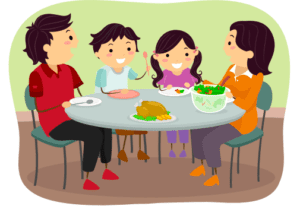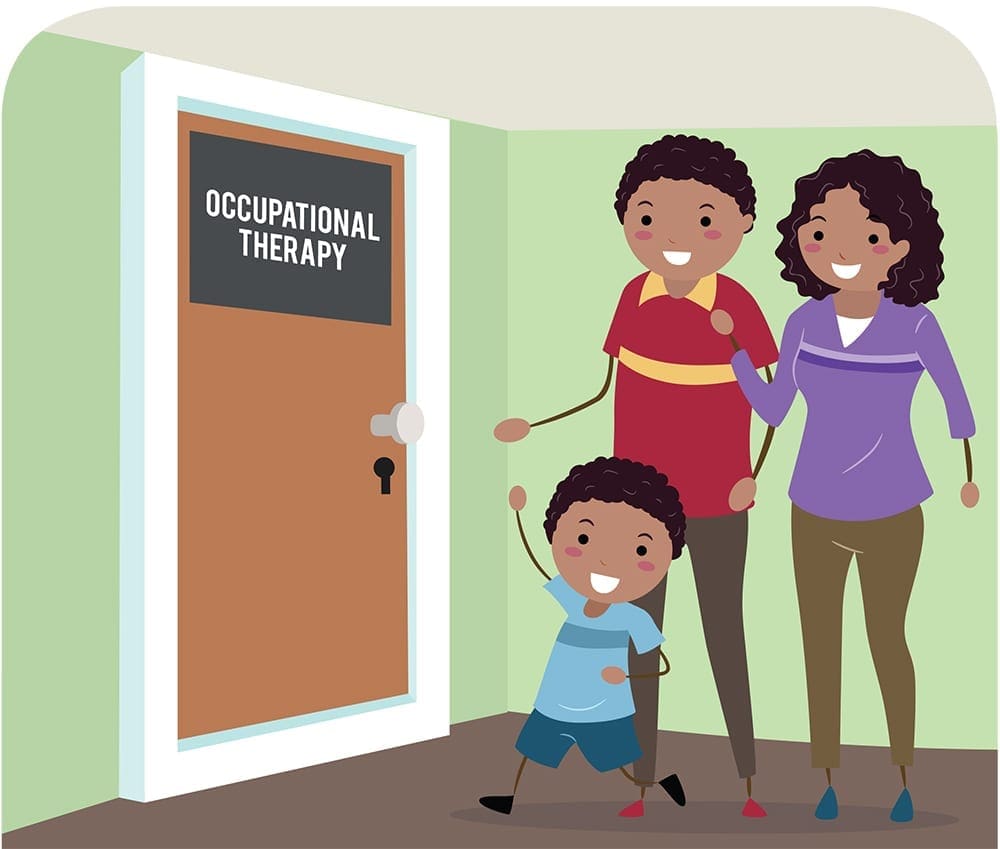Drooling is a typical stage of development for young children. Drooling is defined as the inability to manage one’s secretions. Infants have less volitional control over their head and neck area, so drooling is a common side effect of that lack of control. Infants begin to gain control of their swallowing and mouth muscles between 18 and 24 months. Drooling can contribute to skin irritation, aspiration, dehydration and frequent changing of clothes. If a child is older than 24 months, not teething and not congested, it is not expected that they should be excessively drooling.
How Can Occupational Therapy Help?
Occupational therapists are trained professionals who work with people of all ages to facilitate participating in daily living activities. Occupational therapists can work with children who have trouble controlling their saliva through addressing sensory processing and/or oral-motor strengthening treatment.
Collaborating with a speech-language pathologist is another way an occupational therapist can address your child’s needs. Speech therapists work to assess and treat social communication, cognitive-communication and swallowing disorders in children and adults. Speech-language pathologists are skilled in oral-motor therapy, so they can also work with children who have excessive drooling by improving their chewing and swallowing skills.
What Can I do at Home?
Treatment options should be tailored to a child’s specific needs and may require further evaluation from an occupational therapist or speech therapist. Consulting with a trained professional is the first step in determining if any sort of formal or informal intervention may be necessary to reduce your child’s drooling. But there are things you can do at home to help increase your child’s control of their saliva:
- Try an electric toothbrush. This oral stimulation may help “wake up” the sensory receptors in the mouth, increasing sensitivity to make a child more aware of their drooling.

- Increase facial awareness by playing games imitating facial expressions. This can be done in front of a mirror to provide additional visual cues for a child.
- Include foods of different temperatures, tastes and textures to improve sensory stimulation inside the mouth. Children who lack sensory awareness in their facial muscles, don’t get the sensory feedback that saliva is near their mouth. Adding food with increased sensory input, such as sour and spicy foods or cold foods such as popsicles, will increase the sensitivity of the receptors in a child’s mouth.

- Encourage using a straw to drink. This will help increase strength of the lips, tongue, and jaw. A good exercise is to suck up thick liquids such as smoothies, milkshakes, yogurt or applesauce. Changing the length and width of the straw can be helpful to meeting the child’s needs.
- Introduce simple oral motor exercises such as blowing bubbles, blowing a whistle, or using a straw to blow a feather. Each of these will help strengthen lip and cheek muscles.
Although an occupational therapist can address common causes of drooling including oral motor weakness or reduced sensory awareness of the mouth, it is very important to first check with your child’s pediatrician to make sure there is no medical reason why a child is continuing to drool. Contact Chicago Occupational Therapy or call (773) 980-0300 to learn more about our services and how we can help your child flourish and grow.

